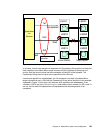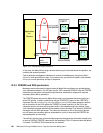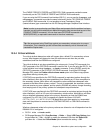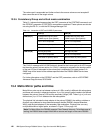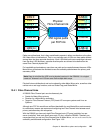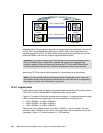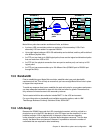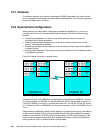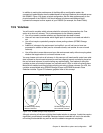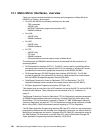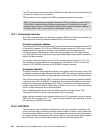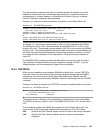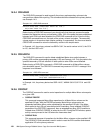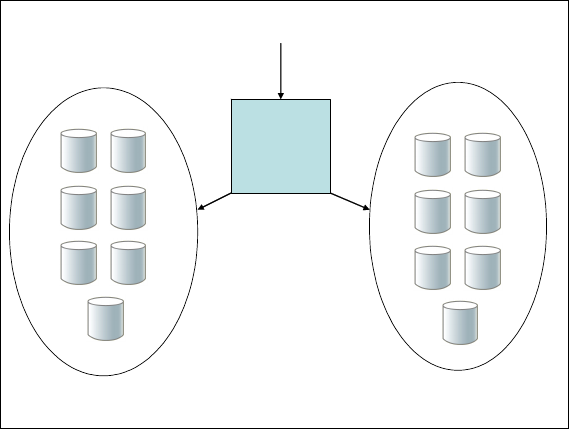
Chapter 13. Metro Mirror options and configuration 147
In addition to making the maintenance of the Metro Mirror configuration easier, the
symmetrical implementation has the added benefit of helping to balance the workload across
the DS6000. Figure 13-8 shows a logical configuration, but this idea applies equally to the
physical aspects of the DS6000. You should attempt to balance workload and apply
symmetrical concepts to other aspects of your DS6000 (for example, the Extent Pools).
13.9 Volumes
You will need to consider which volumes should be mirrored to the secondary site. One
option is to mirror all volumes. This is advantageous for the following reasons:
You will not need to consider whether any required data has been missed.
Users will not need to remember which logical pool of volumes is mirrored and which is
not.
You will not require a potentially complex volume pooling scheme (DFSMS Storage
Groups).
Addition of volumes to the environment is simplified—you will not have to have two
processes for addition of disk (one for mirrored volumes, and another for non-mirrored
volumes).
You will be able to move data around your disk environment easily without worrying about
whether the target volume is a mirrored volume or not.
You may choose not to mirror all volumes. In this case you will need careful control over what
data is placed on the mirrored volumes (to avoid any capacity issues) and what is placed on
the non-mirrored volumes (to avoid missing any required data). One method of doing this
could be to place all mirrored volumes in a particular set of LSSs, in which all volumes have
Metro Mirror enabled, and direct all data requiring mirroring to these volumes. On z/OS, this
could be accomplished using DFSMS Storage Groups and DFSMS Automatic Class
Selection routines. Figure 13-9 shows a graphical view of this concept.
Figure 13-9 DFSMS Storage Group separation
Although mirroring all volumes might be the simplest solution to manage, it could also require
significantly more network bandwidth. Because network bandwidth is a cost to the solution,
minimizing this bandwidth may well be worth the added management complexity.
DFSMS Storage Group
Mirrored Volumes
DFSMS Storage Group
Non-mirrored Volumes
DFSMS
ACS
Routines
Dataset Allocation



